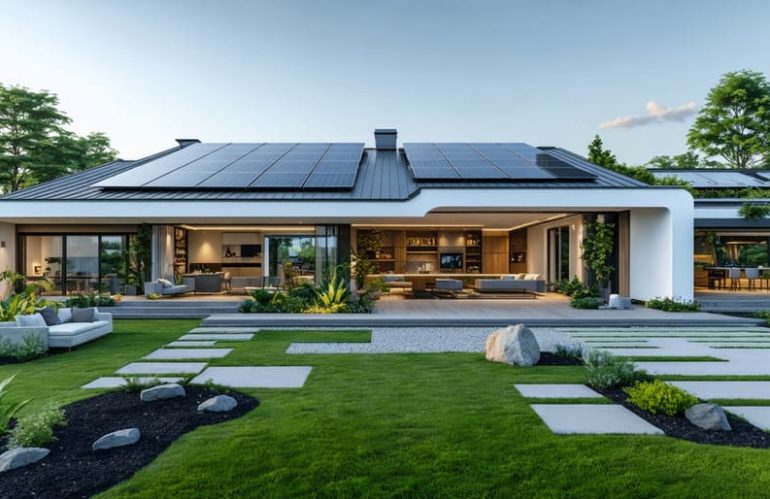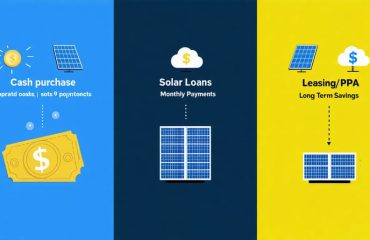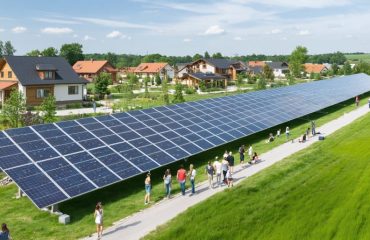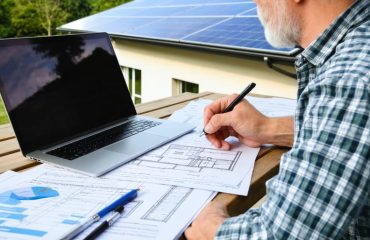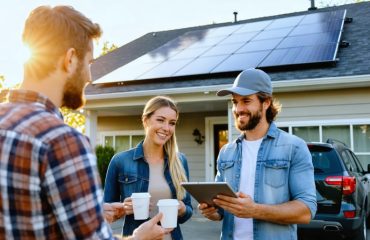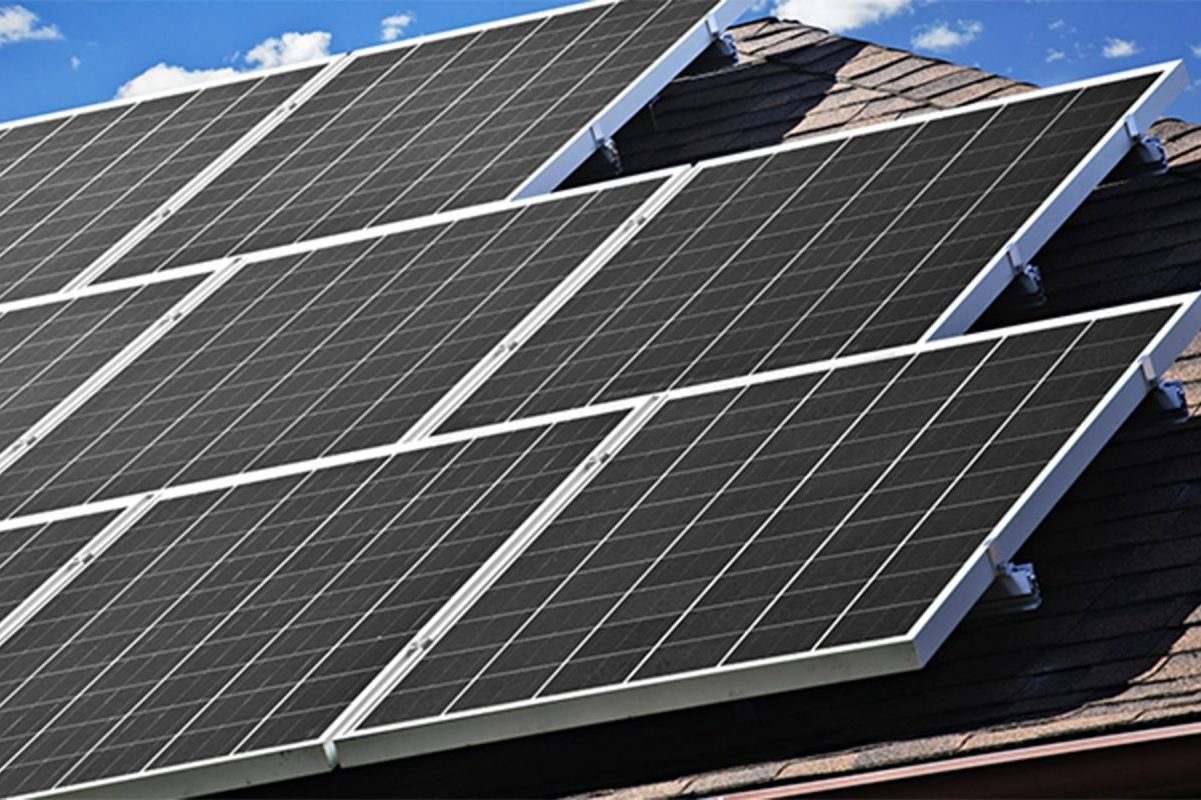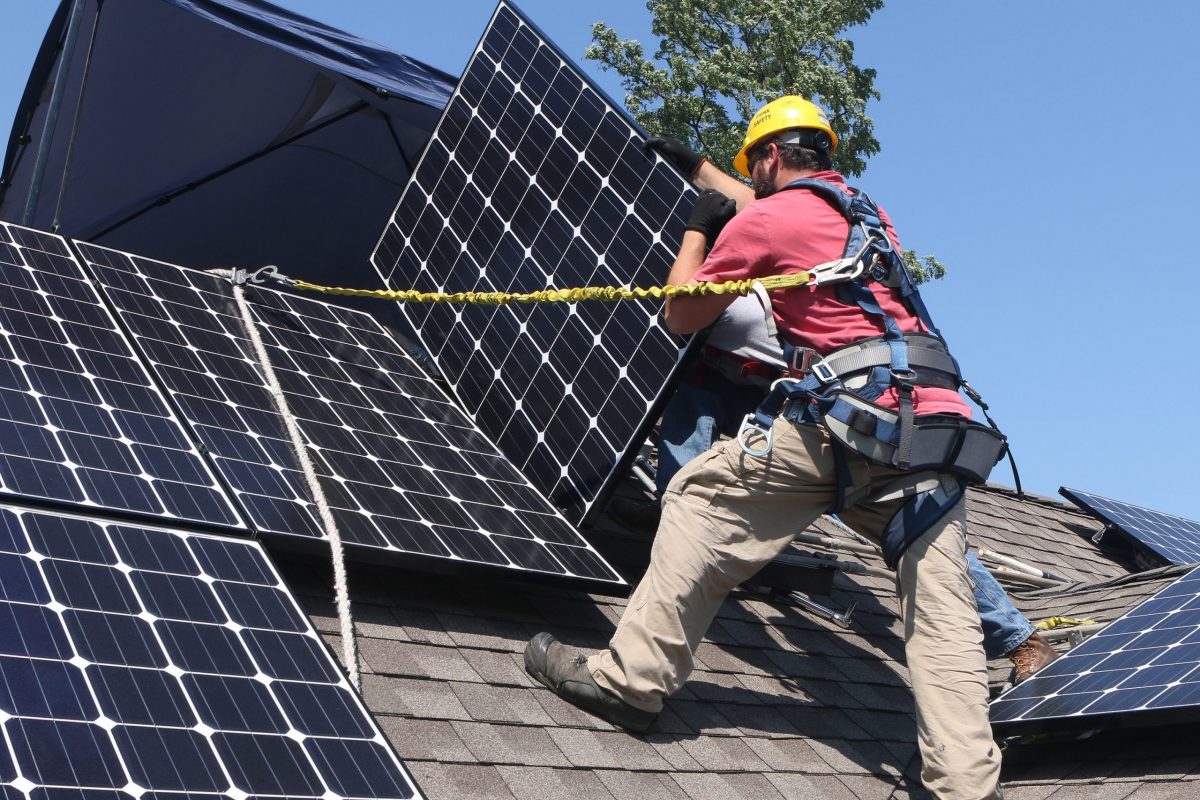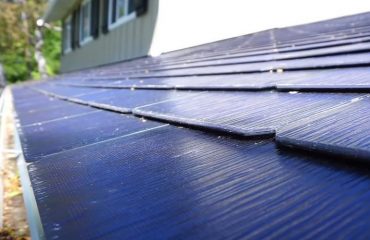Zero-energy homes represent the future of sustainable living, offering a revolutionary approach to residential construction that produces as much energy as it consumes over the course of a year. These cutting-edge dwellings combine advanced architectural design, state-of-the-art renewable energy systems, and superior insulation techniques to achieve net-zero energy consumption while maintaining modern comfort standards.
As energy costs continue to rise and environmental concerns take center stage, zero-energy houses have emerged as a practical solution that benefits both homeowners and the planet. By incorporating solar panels, energy-efficient appliances, smart home technology, and passive design elements, these homes dramatically reduce utility bills while maintaining a minimal carbon footprint.
The concept transcends mere energy efficiency – it represents a fundamental shift in how we think about residential construction and energy consumption. Whether retrofitting an existing home or building from scratch, achieving zero-energy status is increasingly accessible to average homeowners, supported by improving technology and decreasing installation costs. This comprehensive guide explores the essential components, benefits, and practical steps toward creating your own zero-energy home.
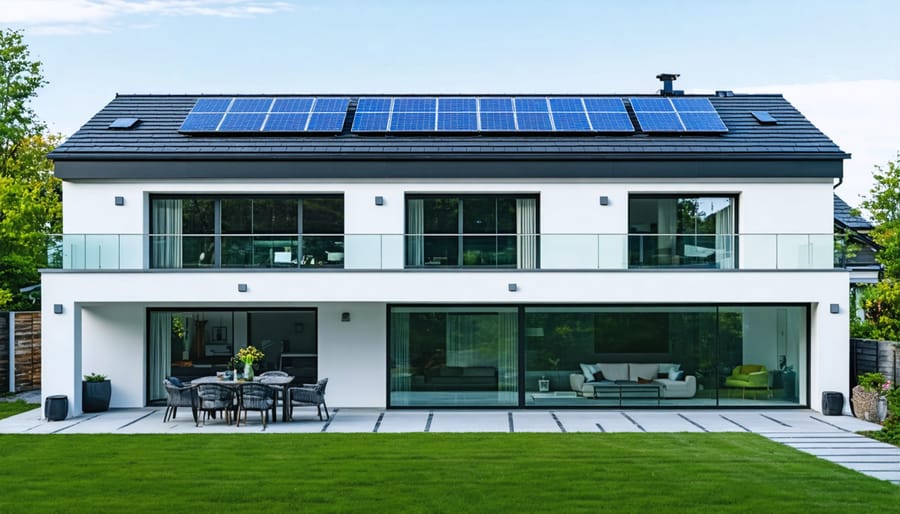
What Makes a Home ‘Zero-Energy’?
Beyond Solar Panels: The Complete Energy Picture
While solar panel installation requirements are a crucial first step, achieving true zero-energy status requires a holistic approach to home energy systems. Modern zero-energy homes combine multiple technologies that work in harmony to maximize efficiency and production. Smart home automation systems control heating and cooling based on occupancy patterns, while energy-efficient appliances reduce baseline consumption. Heat pumps extract warmth from the air or ground, providing both heating and cooling with minimal electricity use. Energy storage solutions, like battery systems, store excess solar power for nighttime use or cloudy days. Energy recovery ventilators maintain air quality while preserving temperature, and advanced insulation materials create an ultra-efficient building envelope. Water heating often combines solar thermal systems with heat pump technology for year-round efficiency. These integrated systems communicate through home energy management platforms, allowing homeowners to monitor and optimize their energy use in real-time, ensuring their home maintains its zero-energy status while providing maximum comfort.
Smart Home Integration for Maximum Efficiency
Smart home technology serves as the brain of a zero-energy house, orchestrating energy use with precision and ease. Modern systems connect everything from thermostats and lighting to appliances and solar panels through a central hub, allowing homeowners to monitor and optimize energy consumption in real-time. Mobile apps provide instant insights into energy usage patterns, while automated systems adjust heating, cooling, and lighting based on occupancy and time of day. Smart plugs can automatically power down devices during peak rate hours, and intelligent battery systems store excess solar energy for later use. These integrated solutions not only maximize efficiency but also simplify the homeowner’s journey toward energy independence, making sustainable living both comfortable and convenient. The best part? Many of these systems learn from your habits over time, continuously improving their performance and reducing energy waste without sacrificing comfort.
Real-Time Energy Monitoring: Your Control Center
Essential Monitoring Tools for Homeowners
Keeping track of your zero-energy home’s performance is easier than ever with today’s user-friendly monitoring tools. A smart energy monitor, installed at your electrical panel, provides real-time data about your home’s energy consumption through an easy-to-use smartphone app. These devices help you identify energy-hungry appliances and track your solar panel production.
Smart thermostats are another essential tool, offering detailed insights into your heating and cooling patterns while automatically optimizing temperature settings for maximum efficiency. Many models can learn from your preferences and adjust settings based on weather forecasts and occupancy patterns.
For solar system monitoring, most modern installations come with dedicated apps that show your panels’ performance, energy generation, and potential maintenance needs. These apps often include features like savings calculations and environmental impact metrics.
Home energy assessment tools, such as infrared cameras that connect to your smartphone, can help identify air leaks and insulation gaps. Simple plug-in power meters are also valuable for measuring individual appliance consumption and identifying energy-wasting devices.
When combined, these monitoring tools provide a complete picture of your home’s energy profile, helping you maintain optimal performance and maximize savings.
Understanding Your Energy Dashboard
Your energy dashboard is your command center for monitoring and optimizing your home’s energy performance. Most modern zero-energy homes come equipped with smart monitoring systems that display real-time energy production and consumption data. The main numbers to watch are your daily energy usage, solar production (if applicable), and net energy balance.
Pay special attention to your usage patterns throughout the day. High energy spikes often indicate appliances running simultaneously, which you can adjust by staggering their use. The production graph shows when your renewable energy systems are performing at their peak – typically midday for solar panels.
Your dashboard will likely include color-coded indicators: green for energy surplus periods and red for high consumption. Use these visual cues to make informed decisions about when to run energy-intensive appliances like washing machines or dishwashers.
Many systems also offer mobile apps that send alerts when usage exceeds normal patterns or when maintenance might be needed. By regularly checking these insights, you can make small adjustments that lead to significant energy savings over time.

Optimizing Your Zero-Energy Home
Seasonal Adjustment Strategies
Maintaining a zero-energy home requires different strategies throughout the year to maximize efficiency and comfort. During summer months, use natural ventilation by opening windows during cool mornings and evenings while keeping them closed and shaded during peak heat hours. Installing adjustable exterior shading devices, like retractable awnings or seasonal trellises with deciduous vines, provides natural cooling when needed most.
In winter, maximize solar gain by keeping south-facing windows clear and unobstructed during daylight hours. Use insulated curtains or cellular shades, closing them at sunset to retain heat. Consider using removable window insulation panels for rarely-opened windows during the coldest months.
Smart thermostats can be programmed seasonally to optimize temperature control, while ceiling fans should be adjusted to rotate clockwise in winter and counterclockwise in summer. Maintain your ventilation systems regularly, cleaning or replacing filters as seasons change.
Don’t forget about your landscape’s role in seasonal efficiency. Deciduous trees on the south and west sides provide summer shade while allowing winter sun through. Regular maintenance of solar panels, including seasonal cleaning and angle adjustments, ensures optimal performance year-round.
Monitor your energy usage patterns across seasons to identify areas for improvement. Small adjustments, like sealing drafts in fall and maintaining proper humidity levels throughout the year, can significantly impact your home’s energy performance while maintaining comfort in every season.
Common Optimization Mistakes to Avoid
Even with the best intentions, homeowners can make common mistakes that reduce the efficiency of their zero-energy homes. Poor insulation installation, such as leaving gaps or compressing materials, can significantly decrease your home’s thermal performance. Another frequent oversight is improper HVAC sizing – both oversized and undersized systems waste energy and reduce comfort.
Many homeowners forget to regularly maintain their energy systems, leading to decreased efficiency over time. Simple tasks like cleaning solar panels, replacing air filters, and checking seals around windows and doors can prevent unnecessary energy losses. If you’re unsure about maintenance requirements, consider seeking solar community support for guidance.
Overlooking air leaks around electrical outlets, light fixtures, and plumbing penetrations is another common mistake. These small gaps can add up to significant energy losses. Additionally, failing to properly program smart thermostats and energy management systems means missing out on potential savings.
Remember to consider occupant behavior – leaving electronics plugged in, keeping unused rooms heated or cooled, and not utilizing natural lighting can all impact your home’s energy performance. By avoiding these common pitfalls and maintaining regular system checks, you can ensure your zero-energy home operates at peak efficiency year-round.
Financial Benefits and ROI
Zero-energy homes represent a significant investment in your property’s future, but the financial returns are both substantial and multifaceted. While initial costs may be higher than traditional construction, homeowners typically recover their investment through dramatic reductions in energy bills, often saving 60-90% on monthly utilities compared to conventional homes.
The average American household spends over $2,000 annually on energy bills. Zero-energy homes can eliminate these costs entirely, potentially saving homeowners tens of thousands of dollars over the lifetime of their home. Additionally, many states offer tax incentives, rebates, and grants for financing your zero-energy upgrades, significantly reducing initial investment costs.
Property value appreciation is another crucial benefit. Studies show that zero-energy homes typically command a 4-8% premium over comparable traditional properties. This increased value tends to grow over time as energy costs rise and environmental consciousness becomes more mainstream.
Maintenance costs are generally lower in zero-energy homes due to the superior quality of materials and systems used. High-performance windows, advanced insulation, and efficient HVAC systems typically have longer lifespans than conventional alternatives, reducing replacement and repair expenses over time.
The return on investment (ROI) typically ranges from 5-10 years, depending on local energy costs and available incentives. After this period, homeowners enjoy essentially free energy for the remainder of their home’s lifetime. When combined with protection against future energy price increases and the potential for selling excess energy back to the grid, zero-energy homes represent a sound financial investment with tangible long-term benefits.
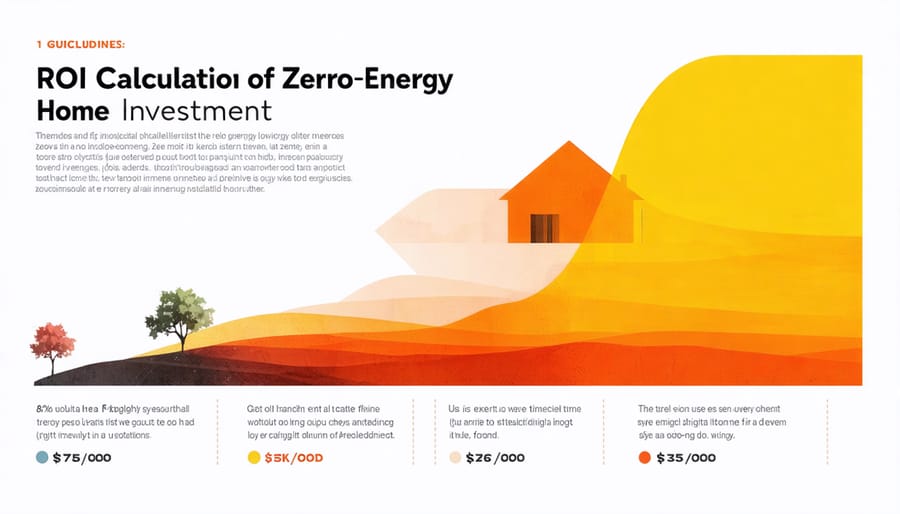
Zero-energy housing represents a significant step forward in sustainable living, offering homeowners a practical way to reduce their environmental impact while enjoying substantial long-term cost savings. By combining energy-efficient construction, renewable energy systems, and smart home technologies, achieving a net-zero energy status is more accessible than ever before.
Taking the journey toward a zero-energy home doesn’t have to happen all at once. Start by conducting an energy audit, then implement improvements gradually based on your budget and priorities. Consider beginning with basic upgrades like improved insulation and energy-efficient appliances before moving on to larger investments such as solar panels or geothermal systems.
Remember that local incentives, tax credits, and financing options can make the transition more affordable. Connect with local green building professionals and energy consultants who can provide personalized guidance for your specific situation. While the initial investment may seem substantial, the long-term benefits of energy independence, increased home value, and eliminated utility bills make zero-energy housing an increasingly attractive option for forward-thinking homeowners.

